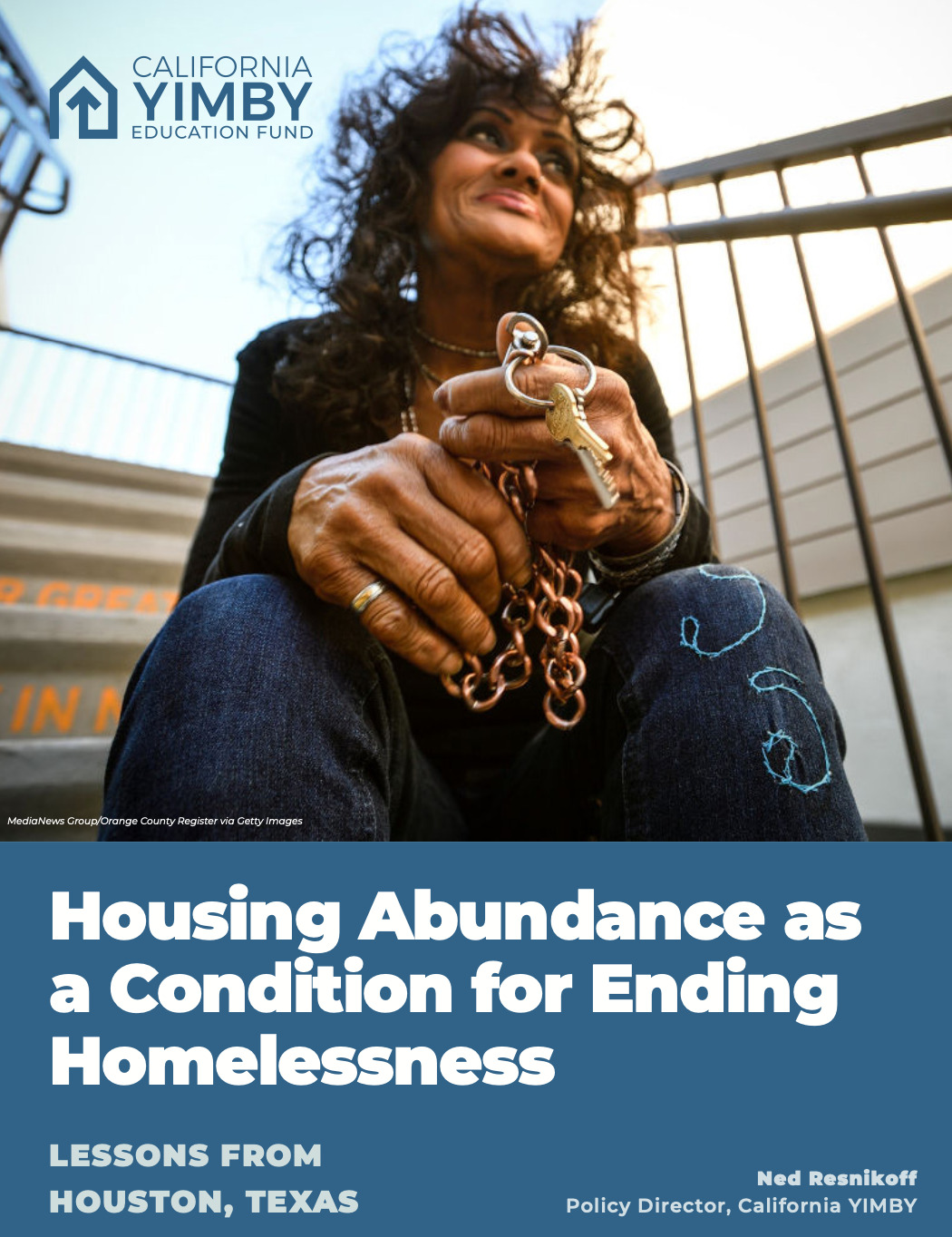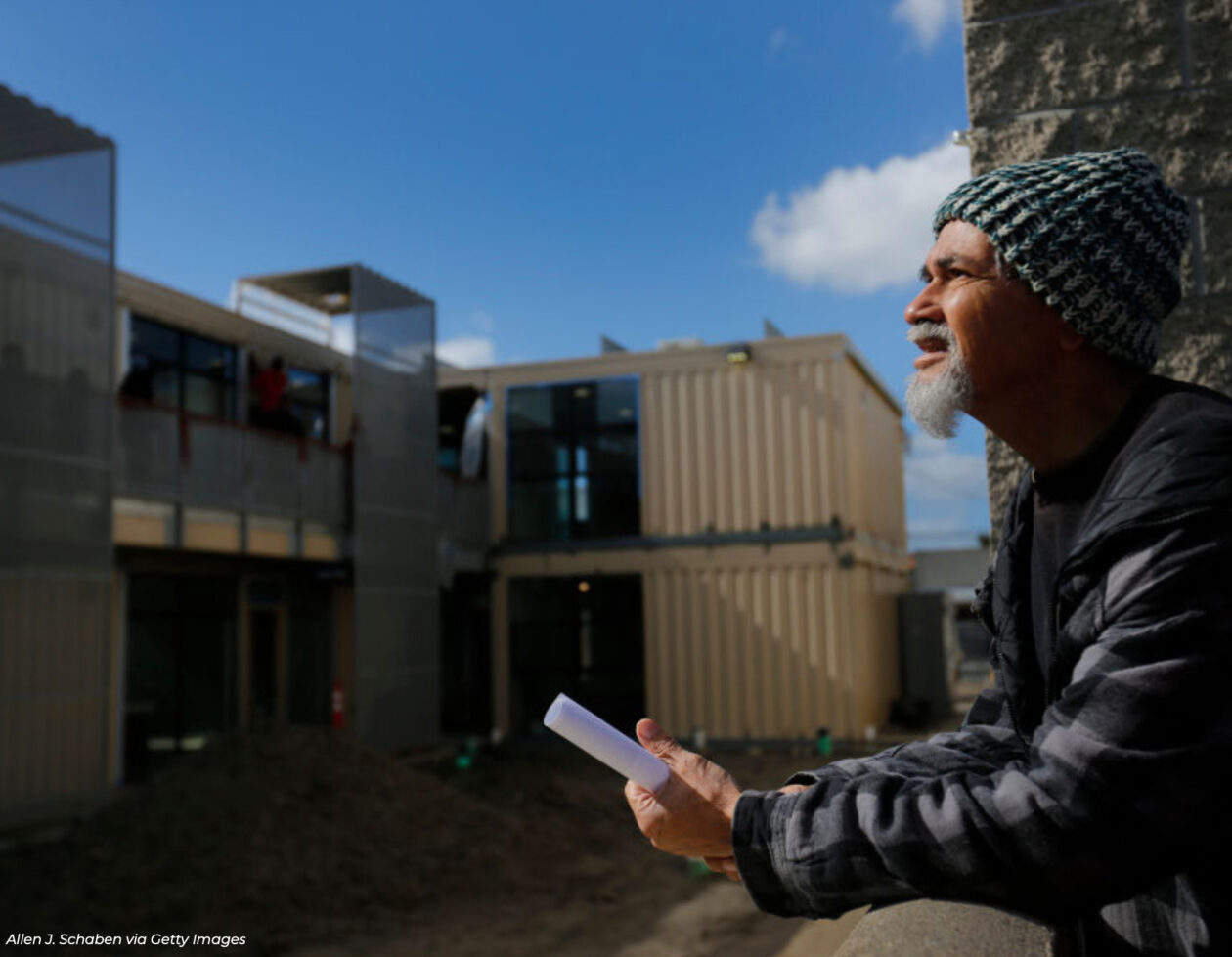Homelessness is a housing problem
The state of California has dedicated billions of dollars to addressing homelessness, but the results are sorely lacking: California’s crisis of homelessness continues to get worse.
In contrast, Houston, Texas has managed to cut homelessness in half over the past decade and house more than 25,000 people—all while spending less, on a per-person basis, than California.
Houston’s secret: abundant, low-cost housing.

Download and read the full report here
Or read the full report online below
Explainer video
The new report, “Housing Abundance as a Condition for Ending Homelessness: Lessons from Houston, Texas,” offers a primer on the successful policy interventions leaders in Houston have used to successfully provide permanent, affordable housing to residents suffering from homelessness.
These interventions include:
- Breaking down barriers that prevent an overall abundance of housing in high-demand markets
- Eliminating zoning and related restrictions on the construction of extremely-low- and no-income housing
- Permanently funding subsidized housing to create longer-term certainty and achieve economies of scale
- Consolidating authority to direct “Housing First”-related actions and programs
- Increasing wages for low-income workers to reduce risk of falling into homelessness
- Enforce local compliance with existing state law and budgetary requirements for the provision of subsidized housing and wrap-around services
You can download the report by clicking here. THANK YOU in advance for being part of the pro-housing movement, and for helping to share this report and our video with as many people as you can! Together, we can help house our neighbors in a more affordable, equitable, and climate-resilient California.
Ned Resnikoff, Policy Director
California YIMBY
Common Myths and Facts About Homelessness
- MYTH: Homelessness is primarily caused by mental illness and drug addiction.FACT: The evidence shows that high housing costs are the primary driver of homelessness. While other factors contribute to homelessness on an individual level, housing costs are what explain homelessness as a large-scale social phenomenon. A study by economists at Zillow found homelessness tends to rise in a community once rents exceed 22 percent of residents’ incomes — and climbs at an even faster rate at around the 32 percent threshold. Similar research from Harvard University’s Joint Center on Housing Studies identified a correlation between a city’s median rent and its rate of homelessness.
- MYTH: Most unhoused people in California come from out-of-state. FACT: Most unhoused people in California are longtime residents of the state. San Francisco’s most recent point-in-time homeless count found that 71 percent of the city’s unhoused people were living in the city when they became homeless; 35 percent had lived in San Francisco for at least a decade.
Los Angeles County’s 2020 point-in-time count found that less than one-quarter of the local unhoused population came from out of state. - MYTH: California has enough vacant housing to end homelessness. FACT: California has a historically low rental vacancy rate, the result of decades-long prohibitions on the construction of multi-family apartments and condos in most of its cities.
As the authors of the book Homelessness is a Housing Problem have found, cities with lower vacancy rates tend to have higher rates of homelessness, because a low vacancy rate typically results from a housing shortage. - MYTH: More policing is an effective way to deal with homelessness. FACT: Encampment sweeps and efforts to enforce “quality of life” regulations do not reduce homelessness. Instead, they push unhoused people from one neighborhood to another. Penalizing an individual’s inability to find housing they can afford does nothing to address the underlying problem.
A crime-and-punishment approach to addressing homelessness actually makes homelessness worse. A 2019 study of sweeps and citations in San Francisco found that “anti-homeless ordinances play an instrumental role in contributing to homelessness” by “systematically [limiting] homeless people’s access to services, housing, and jobs, while damaging their health, safety, and well-being.” - MYTH: Most unhoused people need mandatory mental health care and substance abuse treatment before they’ll be ready for housing.
FACT: The “Housing First” treatment model — which prioritizes moving unhoused people into permanent housing, with optional “wraparound” treatment services for those who need them — has proved highly effective. Houston substantially reduced homelessness in the region by taking an aggressive “Housing First” approach, while also delivering large, annual increases in housing supply.

